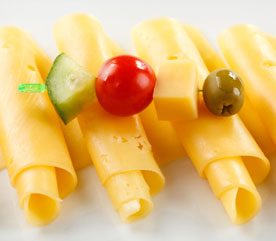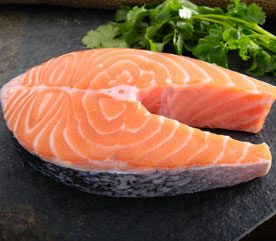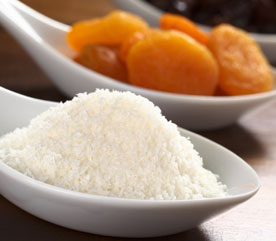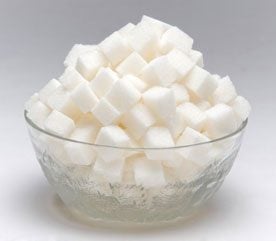
1. Processed Cheese
According to an article in Discovery Magazine, in some cases processed cheese may actually be preferable to “real” cheese. Have you ever looked at the ingredient list of your typical supermarket cheese and seen the word “natural enzymes?” Those enzymes are collectively called rennet, which comes from a calf’s stomach. Rennet causes the caseins in milk to clump and form curds, which are then pressed and aged by bacteria. However, when cheese made by this process is melted it separates and becomes oily (scientists discovered how to partially reverse that process by adding in sodium citrate). But processed cheese bypasses the bacteria-driven process entirely, resulting in an altered structure that melts smoothly. In the end, so-called processed cheese is really mainly just, well, cheese.

2. Fat
The human body was designed to love fatty foods in part because of the needs of the brain. We should choose the “good” kinds of fats, skipping the dangerous ones and adding plenty of brain-healthy ones. The brain is made mostly of fat. Fat forms the membranes around cells and also insulates the bundles of nerve fibers that act as high-speed communication cables in the brain. It shouldn’t be too shocking, then, to learn that fat is the single most important nutrient for protecting and preserving brain function. Eating a low-fat or, worse, a no-fat diet is actually the worst thing you can do for your brain. What the brain craves most are the omega-3 fats. They turn on the genes that determine how the brain develops, repair and preserve brain cells, enable the cells to deliver signals efficiently, and may even facilitate the growth of new cells. Studies show that without enough omega-3s, the brain can’t function properly. Over time, lack of omega-3s may even contribute to the development of Alzheimer’s disease. Unfortunately, most people don’t eat nearly enough of these good fats.

3. Artificial Flavour
Both natural and artificial flavors are actually made in laboratories. But natural flavorings are isolated from a natural source, whereas artificial flavorings are not. However, natural flavors are not necessarily healthier than artificial. According to Scientific American, the natural flavor of coconut is not from an actual coconut, as one might expect, but from the bark of a tree in Malaysia. The process of extracting the bark kills the tree and drives up the price of the product when an artificial flavoring could be made more cheaply and more safely in a laboratory. That natural strawberry flavor you love? It could be made from a “natural” bacterial protein. Mmmm!

4. Sugar
We aren’t saying sugar should be consumed willy nilly, but real sugar can be a better choice than artificial sweeteners. Eating too much artificial sweetener could cause the body to lose its ability to naturally gauge the amount of calories coming in. Essentially, that Diet Coke will make your body say yes to a second brownie. The body responds to natural sugar by secreting insulin, telling your body that sugar has been consumed.

5. Microwaved Foods
The miracle of the 1980s, the microwave has gotten some bad press for destroying nutrients, but some studies show microwaving broccoli can preserve up to 80 percent of its vitamin C. While microwaving your vegetables seems like a quick way to get your veggies and preserve nutrients, you should skip the bagged microwaved popcorn. Some studies have shown that the lining could have potential cancer-causing effects.